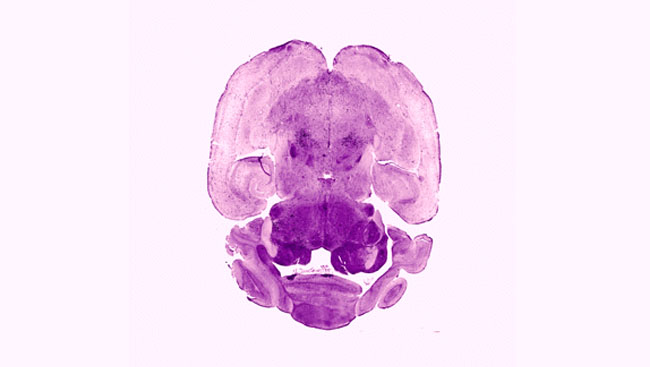Brain, Behavior, and Environmental Change
- Published23 Oct 2008
- Reviewed23 Oct 2008
- Author Debra Speert, PhD
- Source BrainFacts/SfN
According to environmental scientists, Planet Earth is in for a bumpy ride. The climate is changing due to the burning of fossil fuels and deforestation, and as it does, the U.S. Climate Change Science Program reports that we can expect more extreme weather, including droughts, strong storms, floods, and heat waves. Now research is showing that for many animal species and potentially for humans as well, environmental change is a very real stressor, affecting brain and behavior.
For instance, the stress of climate change literally makes young desert amphibians grow up too soon. These animals live in unpredictable environments, in which rainfall is necessary, but hard to come by. Desert toads breed in ponds filled after rare rainfall, and their tadpole offspring develop in the water. Under ideal climate conditions, metamorphosis from tadpoles to adult toads proceeds slowly. However, when conditions rapidly change, and the pond dries up, metamorphosis speeds up, and tadpoles develop into adult toads faster than usual.
How does environmental stress speed up maturation? Metamorphosis and many of its hallmark physiological changes are induced by thyroid hormone. In mammals, thyroid hormone secretion is initiated by a dedicated hormone produced in the brain. However, in tadpoles, thyroid hormone secretion is initiated by other brain hormones, including the stress hormone, corticotropin-releasing hormone. Researchers studying desert toad tadpoles found that reducing the amount of water in desert toad acquaria increased corticotropin-releasing hormone levels in the brain. These data suggest that environmental change speeds up maturation of desert toad tadpoles by literally stressing them out, a reminder that stress takes a physical toll on the body.
In some songbirds, climate change may impact breeding seasons, which could affect species survival. During mating season, male songbirds sing to attract mates and to mark their territories. Song-related brain regions show seasonal plasticity — they expand during mating season compared to other times of the year. For most songbirds, changes in day length induce these brain changes and indicate that it is time for breeding. However, research has shown that songbirds that live near the equator, where day length does not vary much seasonally, still show seasonal brain changes. These changes occur in response to other local environmental cues, potentially including temperature, rainfall, and food availability. The data suggest that the brain is sensitive to many aspects of the environment, and that climate change could have effects on species survival.
Some species may be able to adapt to ongoing change in the ecosystem. Recent research suggests that some birds can influence the social behaviors of their offspring, potentially as a response to environmental conditions. In many species, exposure to male hormones called androgens during development can affect the growth of neural circuits that impact social behaviors later in life. In birds, mothers can choose to inject their eggs with androgens. Birds exposed to more androgens show increased aggressive and sexual behaviors as adults, which could improve their chances of successfully reproducing. However, there are consequences to androgen exposure: androgens also suppress immune function in chicks and reduce long-term survival. Depending on environmental conditions, mothers may be faced with the decision of increasing their offspring’s chances for either reproduction or survival.
How environmental change may affect humans is still unclear and more research is needed. According to the World Health Organization, “Climate change is a significant and emerging threat to public health,” and scientists and clinicians are exploring how it impacts mental and physical health. Animal and human research on chronic stress may shed some light on how climate change affects the brain.
For example, among the threats posed by climate change are food and water shortages, according to the U.S. Centers for Disease Control and Prevention. Research indicates that competition for such scarce resources and enduring uncontrollable conditions cause chronic stress. Recent research showed that women who reported chronically high stress levels over many years had a smaller hippocampus, a brain region important for learning and memory.
Moreover, extreme weather events — which are forecasted to become more common and more severe due to global climate change— can also instigate mental illness in people. Immediately following a natural disaster or extreme weather event, rates of depression, post- traumatic stress disorder, and mood and anxiety disorders increase, although these rates usually drop off within two years. How well society responds to these challenges may also influence how well mental health rebounds — research has shown that rates of mental illness persist or worsen with extended periods of disaster recovery.
There is much scientists are still learning about global climate change, from its likely severity to its impact on human and nonhuman physiology. In many ways, the scope of the challenge will involve a wide range of scientific disciplines. For neuroscience, these data suggest that extreme events can influence processes in the brain, and thus behavior, for years to come, and indicate the need for further study.
CONTENT PROVIDED BY
BrainFacts/SfN
Also In Archives
Trending
Popular articles on BrainFacts.org

















